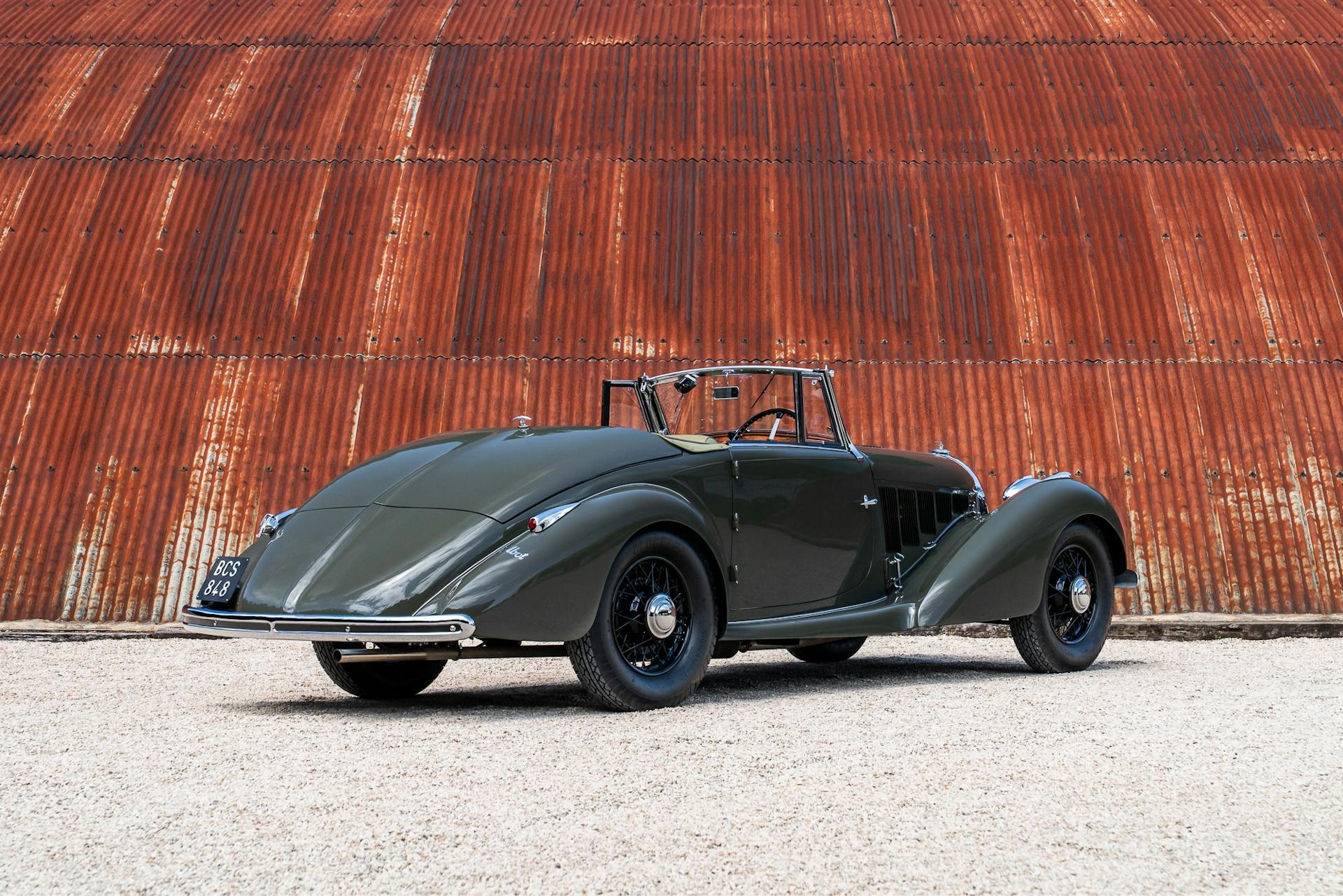1938 Talbot-Lago T15

VEHICLE DESCRIPTION
This supremely elegant Talbot-Lago T15 has recently been restored to an exceptionally high level, and would grace the show field at any international concours d’elegance.
Chassis number 91241 was built new as a disappearing-top two-seater cabriolet, a factory coachwork option that was designed by Paris-based Italian stylist Joseph Figoni. Only about 25 such cars are thought to survive, and this is one of the even rarer early examples that feature a slightly more complex shape. Later cars were simplified in order to make them easier to build.
The current owner has patiently pieced together the Talbot-Lago’s history from when it was bought new on 19 October 1938 by Jean Hereaux, a photographer who was based in Charlesville-Meziéres – part of the Ardennes region in north-east France.
A change of address shows that Hereaux still owned the car in August 1951, and its file includes period photographs taken during this time. It’s thought that he might have kept his cherished Talbot-Lago until 1964, when it was acquired by André Bulloz in Paris and re-registered 985 FV 75.
Bulloz took the car with him to the Dordogne region in early 1979, and then sold it two years later to Pierre Louis Martin in Bordeaux. In 2009, the Talbot-Lago passed to a new ownerwho was based in Toulouse. Although he owned a number of other cars, this one quickly became his favourite and he covered 8000 kilometres in it over the next three years.
In December 2012, it was sold to a Slovakian collector who embarked on a full restoration. The body was removed from the chassis, stripped to bare metal and repaired as required, and new sections of wood frame were added. The major mechanical components were also rebuiltbefore the Talbot-Lago was sold as an unfinished project to its current owner.
The work was then finished to an exceptional standard by Concept & Restauration Bonnefoy in central France, including further work to the body and a full respray, plus an interior retrim, and numerous photographs document the entire process. The 2.7-litre, six-cylinder engine, which is believed to be the original, was meticulously rebuilt and is mated to a manual gearbox rather than the Wilson pre-selector that was fitted to many of these cars.
Now being offered for sale, this stylish Talbot-Lago evokes a golden period of pre-war French Grandes Routieres and represents a rare opportunity to buy a T15 with Figoni’sflowing, open-top coachwork.
MODEL HISTORY
When the Sunbeam-Talbot-Darracq company collapsed in the mid-1930s, the French division of the Talbot business was acquired by Italian-born engineer and entrepreneur Antonio Lago.Lago set about reinvigorating the marque’s image with what would become a very successful motorsport programme, and backed that up with a range of extravagantly styled road cars.
Launched in 1936, the ‘Baby’ Talbot was based on a short-wheelbase version of the chassis found in the longer Cadette and Major models. It was powered by a six-cylinder engine that was offered in a range of sizes: 2.7 litres, 3 litres or 4 litres.
The smallest of those engines – which was powerful enough to give a top speed of more than 80mph – had the option of a four-speed manual gearbox. The larger ‘sixes’, meanwhile, were sold with the Wilson pre-selector gearbox.
As was common practice for prestige continental manufacturers at the time, the cars were built in right-hand drive. The independent front suspension featured a transverse leaf spring, while at the rear there was rigid axle, and body styles included a saloon and a two- or four-seater convertible.
Talbot-Lago revived the ‘Baby’ name following the Second World War, for a four-cylinder model that was intended to be more accessible than the flagship T26. Although the marque claimed that it was the ‘fastest, most pleasant to drive and safest’ car in its class, production of all models at the Suresnes factory fell sharply and the last T15 ‘Baby’ was built in 1953.
Lago then put the company up for sale in 1958, and it was acquired by Simca the following year.